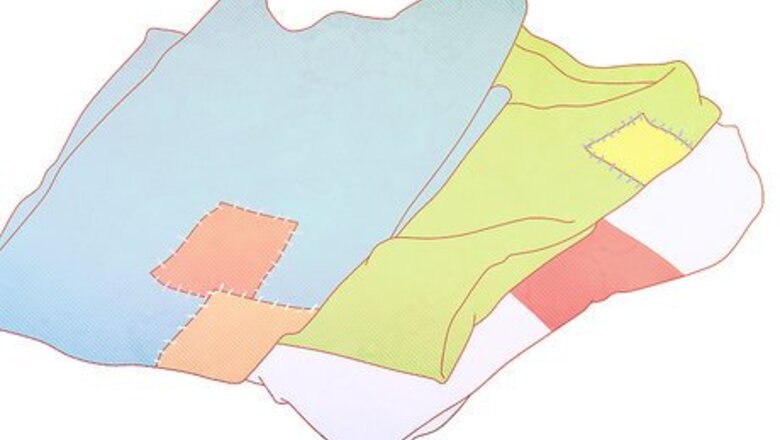
views
Planning a T-shirt Blanket
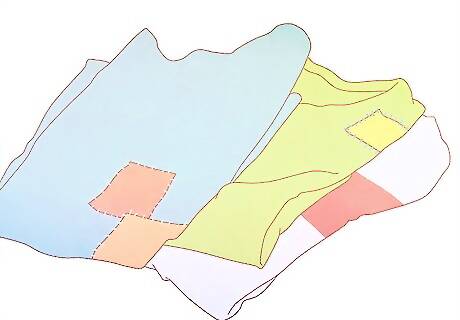
Sift through your old t-shirts to see how many you want to use. The number of t-shirt logos you want to use will determine the size of your blanket. However, if you want a bigger quilt and you don't have enough t-shirts, you can make blocks out of the plain fabric on the back of your t-shirt or buy patterned cotton fabric. Approximately 12 t-shirts (3 by 4 blocks) will make a throw sized blanket. 20 shirts (4 by 5 blocks) will make a twin bed-sized quilt. 30 shirts (5 by 6 blocks) will make a double-sized quilt. 36 shirts (6 by 6 blocks) will make a queen-sized quilt and 42 shirts (6 by 7 blocks) will make a king-sized quilt.
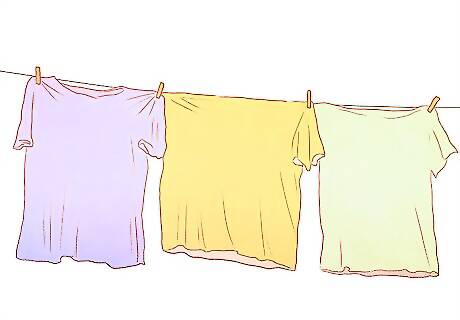
Wash your shirts. Treat any stains before you throw them in the wash. It will be hard to remove deep stains later on in the process.
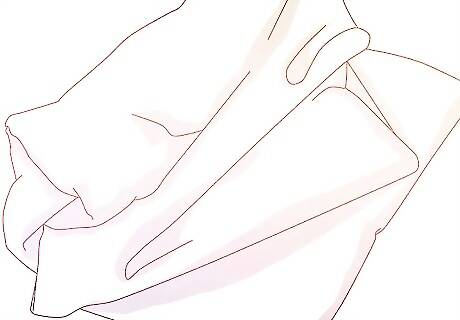
Buy cotton jersey fabric for your sashing and interfacing. The amount you need will depend upon the size of t-shirt quilt you would like. You want to have 2.5 inch (6.4 cm) borders and 2 inch (5.1 cm) pieces for sashing. Choose something that either matches your décor or matches your t-shirts. You may also want to use the same fabric for the back of your blanket.
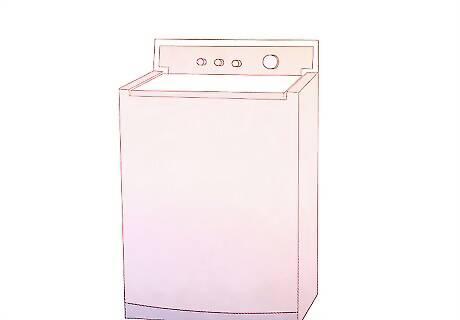
Wash your cotton jersey fabric. Use cold water and low heat in the washer and dryer to ensure dark colors do not fade.
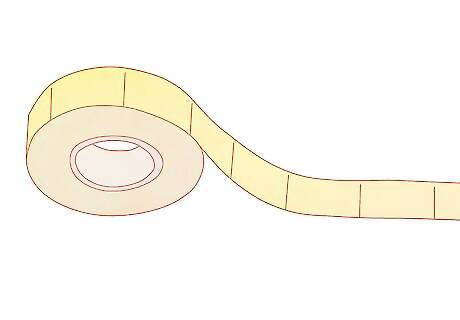
Measure your t-shirt logos. Decide if your block designs will fit in a 12 by 12 inch block or if they need to be 14 by 14 inch blocks. All the blocks need to be the same size.
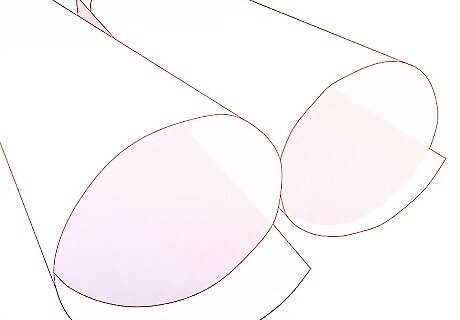
Buy fusible interfacing. You will adhere this to the back of your t-shirt squares to keep your blanket squares from stretching. Buy enough to have approximately 17 inch (43.2 cm) squares of interfacing for all of your blanket blocks.
Creating Your T-shirt Quilt Blocks
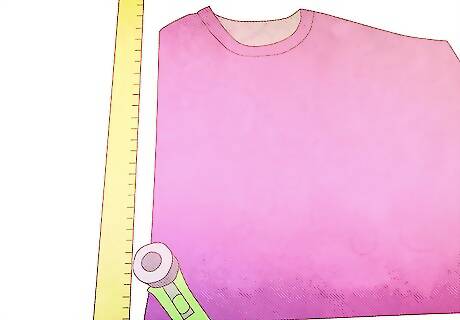
Lay each t-shirt on your self-healing mat. Center the logo and cut 15 inch (38.1 cm) squares with a rotary cutter, if your final blocks will be 12 inches (30.5 cm). Cut 17 inch (43.2 cm) squares if your final blocks will measure 14 inches (35.6 cm).
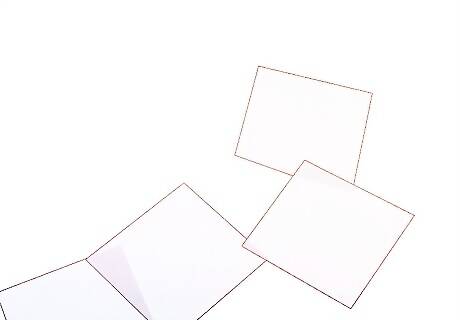
Cut 17 inch (43.2 cm) squares of interfacing for each of your t-shirt blocks.
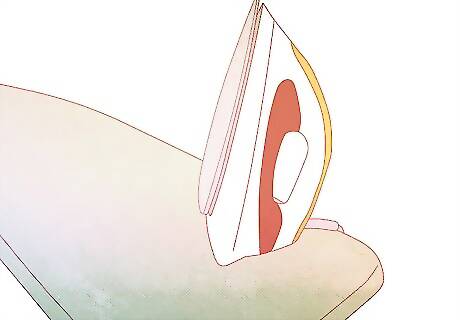
Heat up an iron. Lay the t-shirt square with the logo down. Lay the fusible interfacing with the resin side down, on the back of your t-shirt square.

Iron the back of the interfacing to fuse it to your t-shirt. Follow the package instructions to ensure you attach the fusing correctly.
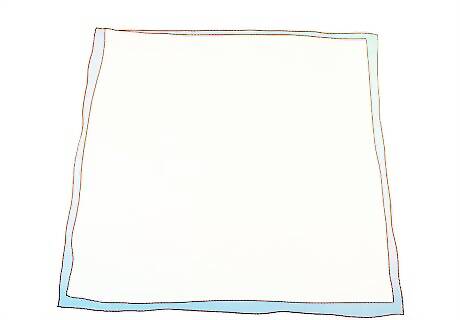
Cut the t-shirt/fusing square to 15 inches (38.1 cm) for 14 inch (35.6 cm) blocks and 13 inches (33.0 cm) for 12 inch (30.5 cm) blocks. Use a rotary cutter or fabric scissors. This will give enough room for seam allowance.
Assembling Your T-shirt Blanket
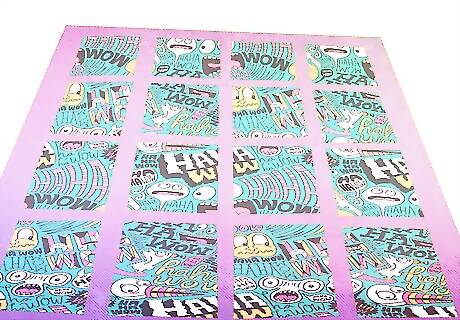
Lay out your blocks on a craft table or the floor. Determine how you want your quilt to be arranged. Try to put intricate designs next to simple ones and light colors next to dark ones.
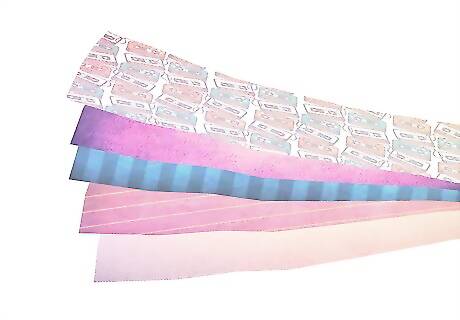
Cut horizontal sashing trips. They should be either 15 inches (38.1 cm) by 2 inches (5.1 cm) or 13 inches (33.0 cm) by 2 inches (5.1 cm), depending upon the size of your blocks. Pin the sashing to the bottom of the blocks, with a ⁄4 inch (0.6 cm) seam allowance. The bottom blocks of the blanket do not need horizontal strips, because they will be next to the border.

Pin the blocks into columns. Use a 1/4 seam allowance for the entire project. Sew 4, 5, 6 or 7 columns together, depending upon the size of your quilt.
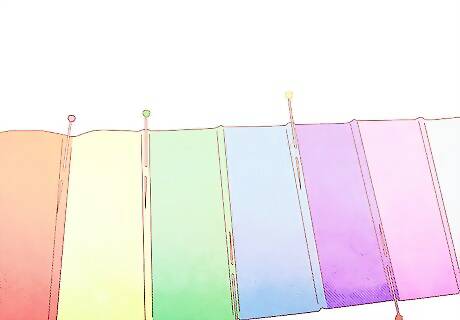
Cut 2 inch (5.1 cm) sashing strips that run slightly longer than the length of each column. You do not need to measure and cut vertical sashing strips for the outside edges, because you will have borders. Sew 1 sashing strip to the right of each column.
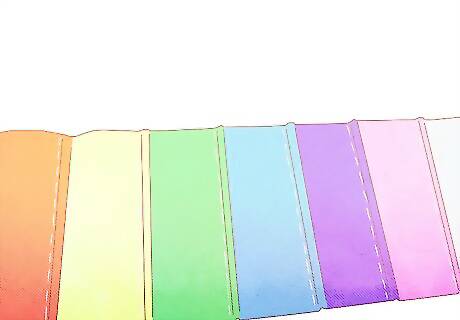
Sew your columns together with a ⁄4 inch (0.6 cm) seam allowance. Cut off any excess fabric around your blanket top. Once your columns are sewn, it is time to begin your borders.

Measure your borders so they are the length of your columns plus 5 inches (12.7 cm) and the width of your rows plus 5 inches (12.7 cm). The strips should be 25 inches (12.7 cm) wide. Pin the borders to your blanket top.

Place the completed quilt top face up. Measure a layer of batting that is the length and width of your blanket. Set the layer of batting on top of your quilt top.

Measure a large piece of cotton jersey material or fleece for the back of your quilt. It should be the length and width of your completed quilt top. Cut it with a rotary cutter or fabric scissors.
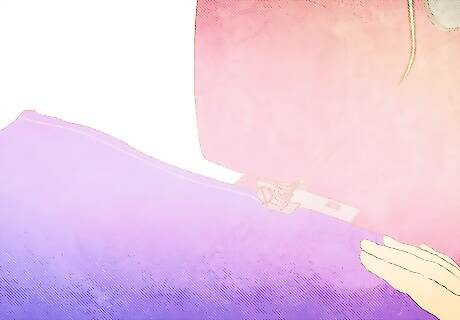
Place the backing on top of the batting, with the right side in. Stitch around the outside of your quilt with a ⁄4 inch (0.6 cm) seam allowance. Leave 1 side of the quilt open so that you can turn the quilt right side out.
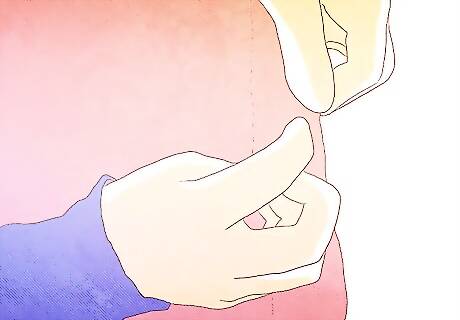
Turn the quilt around through the open side. Pin the remaining open side closed by turning the edges under. Hand sew the remaining side with a needle and thread.

Hire someone to machine quilt your blanket. Alternately, you can hand stitch down the sashing on your quilt. This will keep your batting and quilt blocks from moving around and bunching on the inside of your blanket.












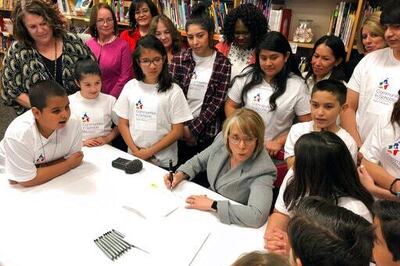







Comments
0 comment